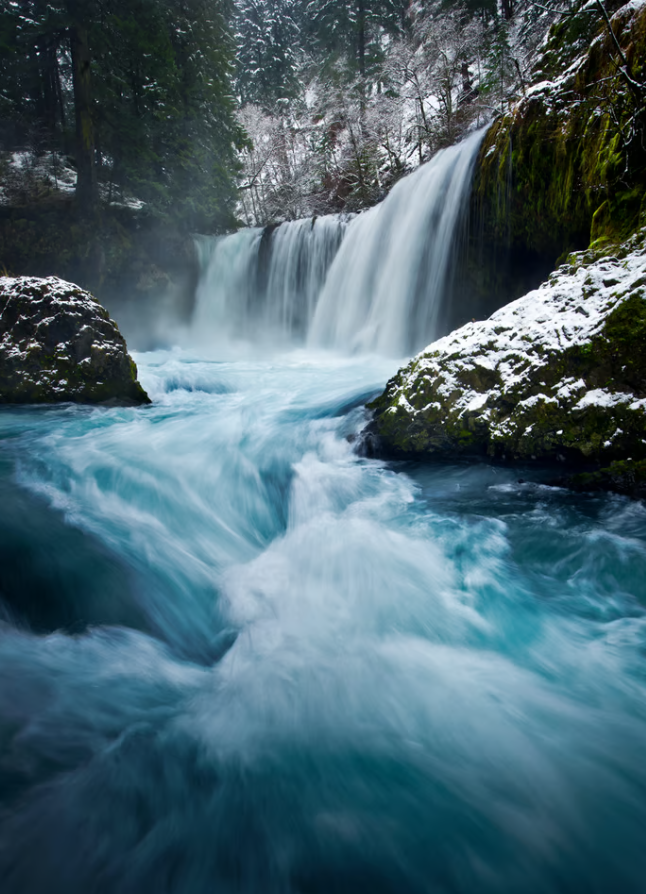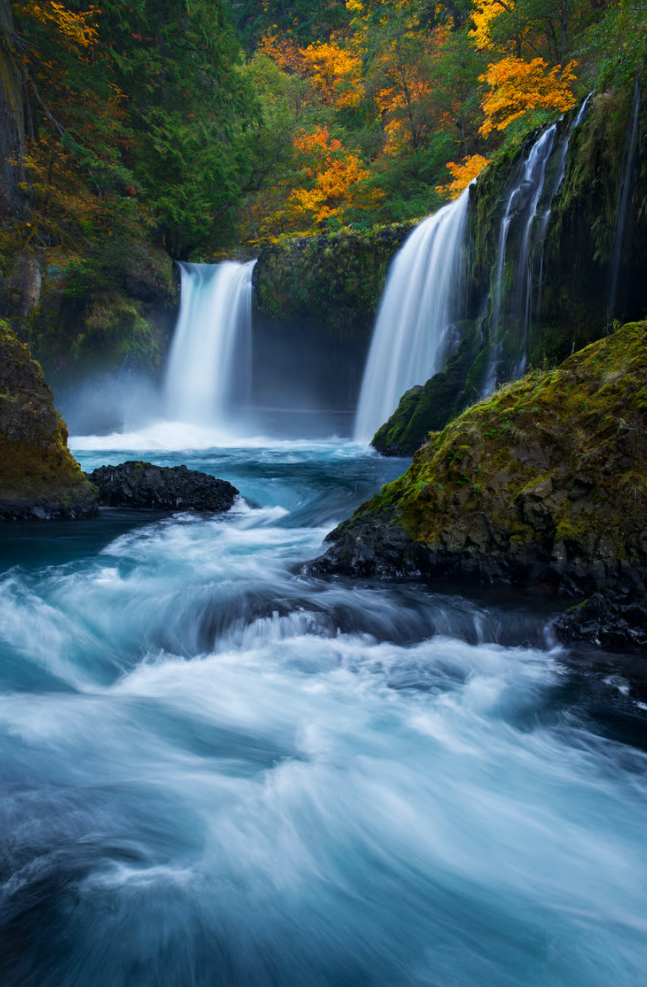Most landscape photographers, myself included, love to photograph gigantic, thunderous, raging waterfalls, quiet little babbling brooks, and just about everything in between. Successfully photographing them is not always easy, though. Here are some tips that I am constantly reminding both myself and tour participants alike while in the field:
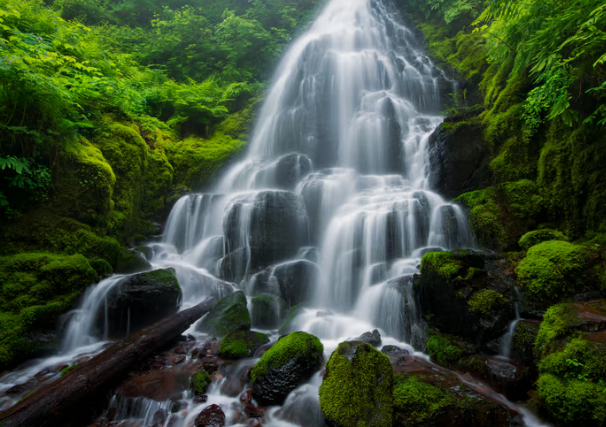
Table of Contents
- Use a Polarizer
- Experiment with Shutter Speed
- Get Wet
- Take Your Time and Pay Attention to Your Surroundings
- Go Back, Often
Use a Polarizer
A circular polarizing filter can help improve just about any stream or waterfall scene. It helps to cut glare and increase saturation when dealing with wet foliage, cuts glare on wet rocks, and can tone down the unwanted reflections in water from bright patches of sky overhead.
A circular polarizing filter also prevents two stops of light from getting to your sensor, which can be extremely useful if you are looking to slow down your shutter speed, but can be equally as horrible if you are looking for the opposite, due to foliage blowing around in the wind.
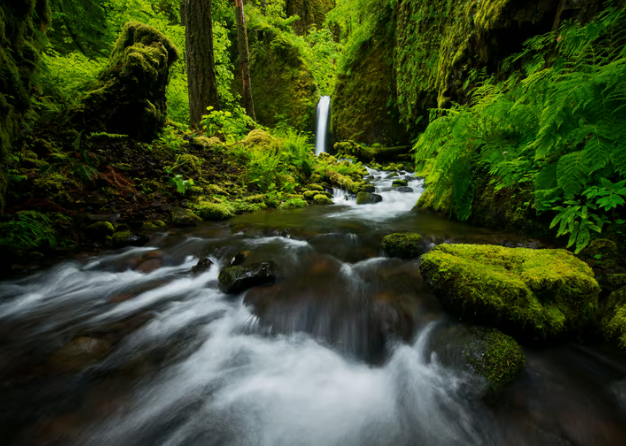
Experiment with Shutter Speed
When the topic of stream and waterfall photography is brought up, many people may suggest doing whatever is possible to get a very slow shutter speed. While this soft, milky effect is often quite nice, I find that viewers, especially non-photographers, may relate to an image better if some detail appears in the water. I find the sweet spot to be between 1 second and 1/8 second, depending on the specific situation.
When photographing a scene with very fast-moving water, I find myself on the shorter end of that spectrum, and when photographing a scene with very slow-moving water, I find myself on the longer end sometimes even going as long as 2-4 seconds while still maintaining detail in blurred water.
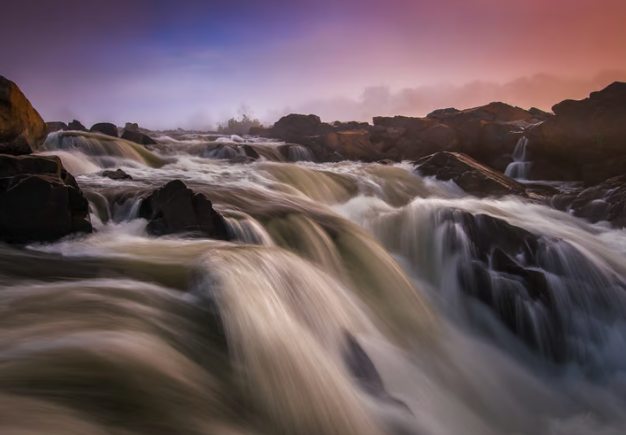
Of course, none of this is black-and-white. There are plenty of exceptions. For example, when photographing a swirling eddy in a stream, sometimes 30 seconds may not even be long enough. Or, when photographing extremely violent whitewater, one may find that they prefer freezing the action with a short shutter speed. Tiny adjustments can make or break any photo, and it is important to experiment as you get a feel for how to choose optimal shutter speed.
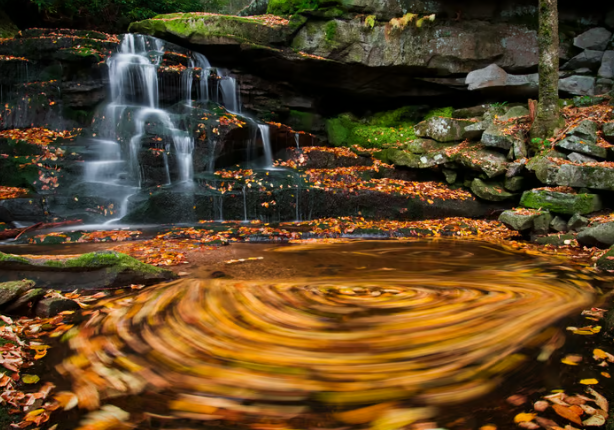
Get Wet
If you are looking for a dramatic, in-your-face perspective, throw on your ultra wide-angle lens, and get right in the water. There can be quite a difference between standing in any given scene you are photographing, versus standing next to it, on the outside, looking in. Getting in to a scene puts your viewer right there with you. This is, more often than not, a good thing!
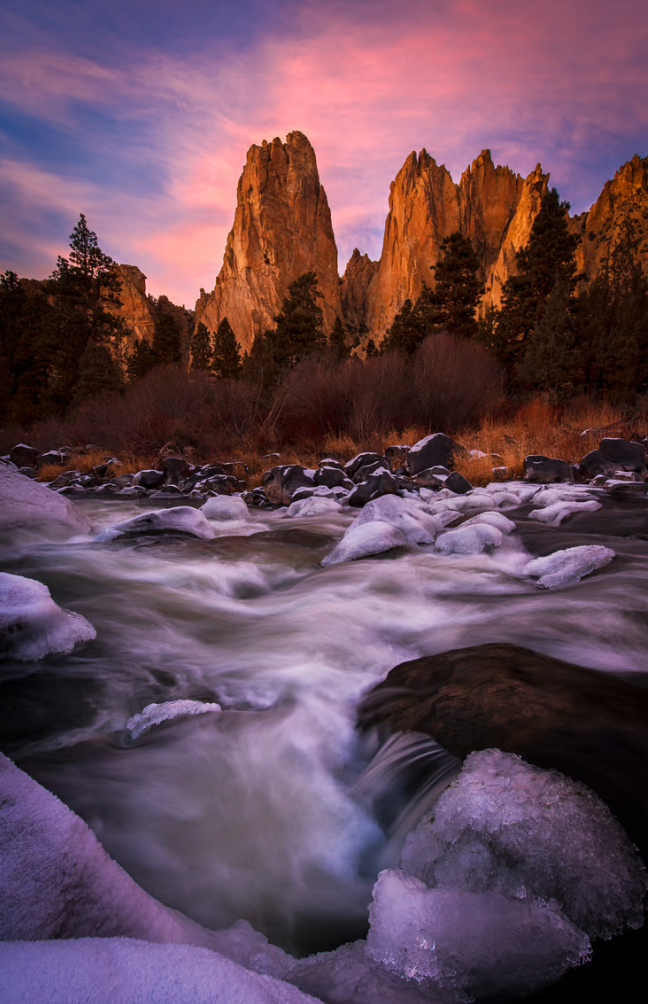
There are several safety considerations when getting in the water. Be wary of slippery rocks and fast currents that may sweep you off your feet. If you have any doubt at all about your ability to stand in rushing water, it is simple: do not take the risk.
You should also take care to keep your polarizer or front element dry. I like to use a Rocket Blower to blast water droplets off my lens. If that fails, careful wiping with a microfiber lens cloth will suffice.

Take Your Time and Pay Attention to Your Surroundings
When photographing a beautiful stream or waterfall, it comes all too naturally to hone in on what one perceives to be the most interesting or important feature in any given scene. While this most certainly works at times, this approach often leads to simple, straightforward, and obvious compositions, which can be nice, but may also get boring after a while.
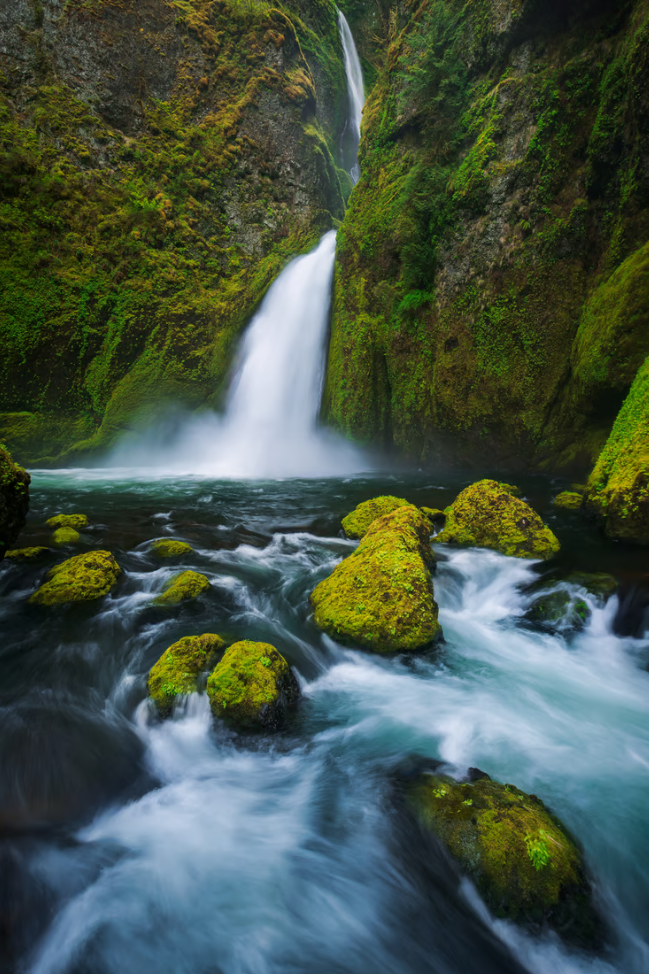
Take the image below, for example. On this particular day, I spent two hours photographing along and in this stream, and then one hour photographing a beautiful waterfall a few hundred yards upstream. Only after spending several hours photographing the most obvious scenes, and beginning my hike back to the trailhead, did it occur to me how beautiful that neon green forest was when looking downstream and that I ought to find some way to include it in my photo.
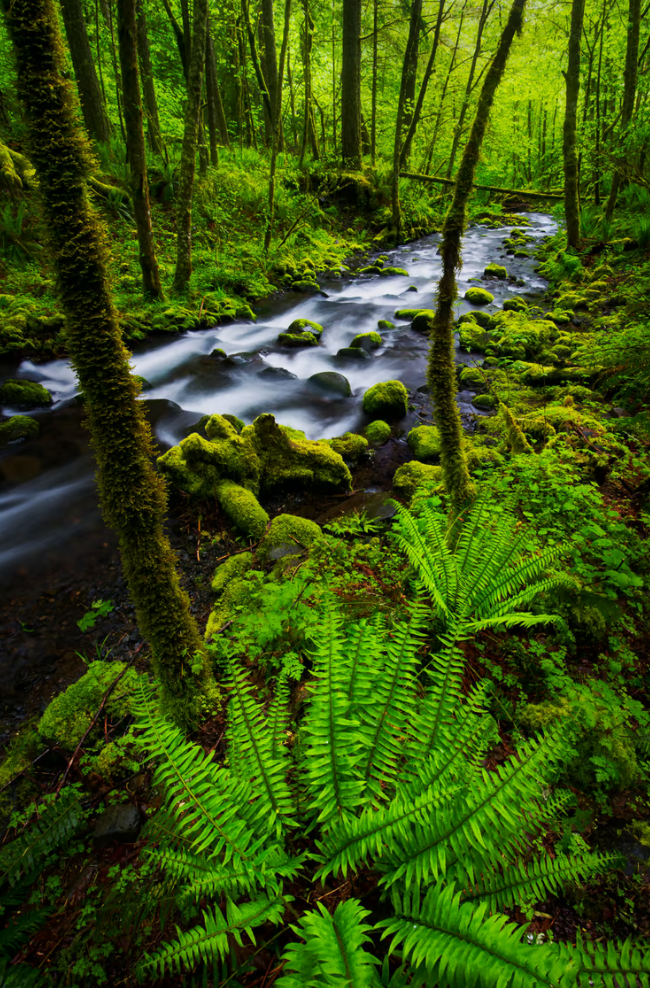
Go Back, Often
I find that most of my favorite waterfall and stream images have come from return visits to familiar locations. There is a lot to be said for being familiar with any particular stream or waterfall when trying to create compelling imagery. If you know every bend of a stream like the back of your hand, you will undoubtedly be able to move more quickly in rapidly changing conditions.
It is also helpful to return to the same scenes during different seasons, or during different water flow, because these ephemeral changes may afford new photographic opportunities that weren’t there before. It is safe to say that this principle holds true in most landscape photography, but it is very relevant when working with water features of any kind.
If there’s any Question or Contribution, kindly comment in the comment section below.
